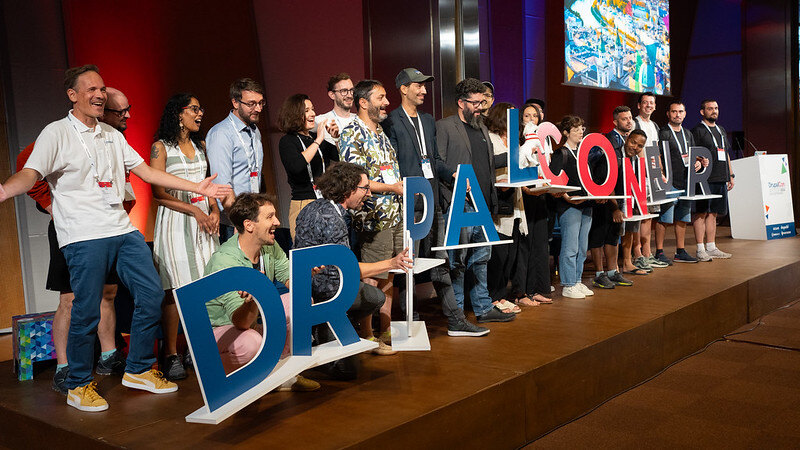Understanding and responding to client requirements is as the heart of everything we do as developers. But research needn't be laborious; never underestimate the power of post-it notes!
I recently led a practical session with the North West Drupal User Group (NWDUG), showing developers how you can turn a room full of people’s ideas into a prioritised list of agreed specifications.
Why Bother?
Converting client requirements into performance specifications is the foundation of any good digital strategy. It can be a daunting prospect, but gathering ideas from a range of people is vital to defining the right acceptance criteria for your project.
Using a sticky wall is great for organisations of any size as you can include any number of stakeholders in the focus group. Once everybody has been briefed, it’s a good idea to split the group into smaller subgroups of 4 or 5 people - this gives everyone a chance to speak and unearths a wider range of ideas.
As the facilitator, you must only do things that the group tells you to do: you can make suggestions, but, ultimately, the group decides what happens to the post-its.
Define the Goal: What do I want?
The first step is to define the goal that you are trying to achieve: this is the end product that you will have once you have carried out all your specified requirements, and can be anything from “a website where customers can buy our widgets” to (in NWDUG’s case) “all the beer from the Port Street Beer House in our hands for free”.
The goal must be a firm destination: something you can take steps towards achieving, even if you are not sure what those steps are.
Define your Steps: How do I get there?
How do I get from where I am now to successfully achieving my goal?
-
Each step must be a concrete action. They should involve verbs, but no “thinking”, “considering” or “discussing”.
-
Each step must be written on its own post it note. This allows you to restructure and sift out the most important steps.
-
Every step gets written down, no matter what. The group does not have to agree that a step is right for it to be included.
Get it on the wall
Invite a spokesperson from each group to add their post-its to the overall picture.
Apply Updates: What's Missing?
Do any steps need clarification?
Have you uncovered any missing steps (now that you’ve seen the others)?
It’s time to add additional steps, once the group has approved or disapproved the alteration. If you find yourself with a particularly quarrelsome group, democracy rules: a show of hands can provide a definite answer.
If in doubt it is always better to add something to the wall than not.
Remove Duplication
The wall is the draft version of your final specification. As such, it needs to contain every idea the group has generated: every unique step remains on the wall and becomes part of the final plan.
Having said that, some steps are self-evident, and several people will have written them down. To keep your wall manageable, you can remove a post-it if it expresses the exact same step as another. Before you remove one, give the group the chance to agree it is a duplicate.
Pattern Recognition: Arrange your ideas
Streamline the wall by grouping any post-it notes that are similar, or actions that could come under the same category.
You are looking for groups to start emerging: at NWDUG, we had two notes reading “Steal a get-away truck” and “Turn Superman evil and get him to carry the beer for you”, which the group decided both identified a need to carry out some kind of preparation for removing the beer from the scene of the crime once it was stolen.
What you are looking to do is cluster the post-it notes together into similar areas, with the group telling you where they think those clusters are naturally forming. The process will get easier as the clusters become more defined, but you will still find the odd note that doesn’t fit with any of the others. These notes are a cluster of their own: don’t be tempted to discard them.
Categorisation: Name your Clusters
When you’ve finished, the group will see a number of clusters that seem to have appeared spontaneously from their ideas. Now it’s time to name the clusters, even the ones that only have a single step in them.
With the cluster titles on the wall, get the group to stand back and look at the overall pattern of categories: this is their last chance to make any changes.
Prioritisation: What comes first?
The final stage is to prioritise the categories, using whatever scale you want to use. At NWDUG, we prioritised steps that needed to be carried out first, but you can also ask people to identify those that are the most important to complete, or those that will have the biggest overall impact.
In order to prioritise, give each member of the group a set number of voting stickers (or a pen each will do). When voting, a group member can make all their marks on a single category name, or they can spread them out between any number of categories. Once everyone has made their marks, the category with the most dots comes first, working down to those categories with no votes at all.
What you have Achieved
This process should allow you to move quickly and painlessly from any number of very specific, individual ideas of what the work needs to be, through to a more general framework.
All individual requirements are open for discussion, without a single, authoritative voice dominating the process. If the requirement in question really is key to achieving the final goal, it will find its way to the heart of a cluster.
The Next Step: Defining your Approach
When it comes to translating the sticky note ideas into a digital specification, form the basic steps from the priority categories defined. At this stage, some of the post-it actions can be interpreted and adjusted - it’s not a concrete set of instructions. The focus group agreed what needed to happen for them to reach their goal, not how it needed to happen. Take the time to listen to all client requirements, before marrying them with your digital expertise - everybody wins!
To find out about our Discovery process, speak to one of our Digital Strategy and Consultancy experts.








